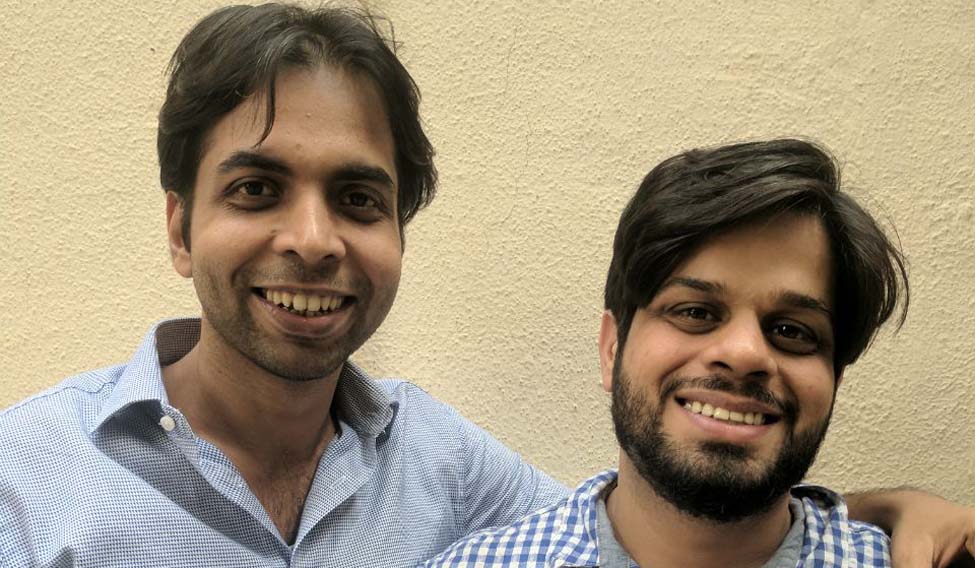Two young men from Delhi, Abhishek Banerjee and Anmol Ahuja, are only a few months shy of completing a decade in Mumbai, but few know they’re part of a relatively new profession in Bollywood—casting directors. The duo run a company called Casting Bay where they cast actors in ads, films as well as web series.
But aren’t casting agents and casting directors the same? “The basic difference between casting agents and casting directors is that casting agents push an actor for roles and if the actor gets the role, then the agents take a cut. Casting directors get the actor to play the role which they feel she/he can do properly,” says Banerjee. In simple terms, a casting director does not represent you; they ensure the casting of actors for all roles in a film, while staying as a part of the project.
“We are basically a part of a project's creative team. Casting is a process of filmmaking, it is not outsourcing. What work casting agents do is outsourcing,” adds Ahuja.
The duo, who come from theatre backgrounds and have English Honours degrees, met during an audition in Delhi. They continued to meet up and hang out during other auditions such as Chak de India. However, things changed for them during Dev D when Anurag Kashyap asked them if they could help out his casting director Gautam Kishanchandani since both were familiar with the actors in the Delhi theatre circuit. Impressed with the duo’s hard work, Kishanchandani suggested that they move to Mumbai. They took him up on the offer and the rest as they say is history!
From Once Upon a Time in Mumbai to No One Killed Jessica to The Dirty Picture, they learnt more and more about operations in the film industry and how it functioned, and it was around this time that their work began to get noticed. “We just wanted to work in good cinema. That was the main idea. It was never about casting, direction, acting. It was just about being a part of filmmaking and luckily, it clicked,” says Banerjee.
However, casting is no mean feat. It is a tricky business and entails a lot of hard work. “A film is a product of history and our job is to ensure that the actors and characters are remembered. So it becomes very important for us to crack that,” says Ahuja. “Every story has its own world. Once we read the story and understand the world, we discuss the world with the director, who obviously has ideas about what he wants or sometimes he is still figuring out how to make the world look believable. “That’s why you need a very wide horizon for your imagination and that’s when we start using our imagination, call in actors who we think are suitable to play that particular part, belong in that world of story and style and try and get a performance which suits perfectly,” he says.
For Rock On 2, for instance, the director needed khasi actors and so they traveled all the way to North East, to find actors from khasi tribe and it was difficult because they didn’t speak Hindi. On top of that, Tura (Meghalaya) was an insurgent-hit area, with curfew after dark. In Secret Superstar, they looked to cast a woman who could play Zaira’s mother, resembling her. “She needed to be fair and all that. Meher fit the bill,” says Banerjee. Secret Superstar took long because “it is a film heavily dependent on casting.” says Banerjee. They scouted for actors for the film for almost a year. In Phillauri, they needed to cast two different worlds within one film—the present world which was the rich Punjab where people got married in palaces and then there was the 1920s Punjab, still in the pre-independence era, where romance was very different form the current generation, says Banerjee. “The characters have to look their era, so it’s a very tricky to cast such films….a film within a film. One is folklore, one is realistic, that acting can be old school, but this acting has to be real. These are the kind of challenges we face,” says Banerjee.
They are of the opinion that sometimes looks go a long way and an actor may get the part based on how she/he looks, instead of a woman/man who acted very well, but did not look the part. “Every actor needs to adapt themselves to different scripts,” says Banerjee, who, at times, has to help actors bring out whatever the director wants. “I become the coach, training the actor, making them rehearse the lines, and describing exactly what point to look at so the camera captures the expression and all that,” he says. “So, we patch the actors and make them look good. Of course, on screen, the audience never gets to know,” adds Ahuja.
In their line of work, failures aren’t uncommon. Twice or thrice in their careers, it has so happened that they cast an actor and were pretty sure about him/her, but somehow that actor wasn’t able to perform on the sets for different reasons. One could be their inability to display an understanding of the text or the subtext in the dialogues. That, they say, is the “biggest nightmare” for a casting director.
Both Banerjee and Ahuja feel that training is something that people shy away from, but it is a must for any aspirant in the film industry. Banerjee says that there aren’t many players in the market that are giving good training to people interested in acting, not even the big schools. “I don’t think they’re doing a good job because I keep meeting students from so called 'big schools in Mumbai' and I just see rubbish there. The most interesting thing is that, after a year or two, these actors also admit that they have wasted their time,” adds Ahuja.
Banerjee feels that the acting schools also should have some kind of entrance exam and Ahuja feels that the curriculum needs to be overhauled. “Actors are really training hard. Men and women go to the gym everyday and sweat it out, but they should also spend the same amount of time training hard in acting and there are so many ways to do that,” says Banerjee. There are trainers in Kerala or Pondicherry who will teach the actors a thing or two about breathing, clarity of speech and stressing syllables,” says Banerjee.
Anmol recalls attending an acting workshop as a seven-year-old kid. “Now, when I read about a character, I immediately go back to what I learned at the age of seven, because every character will walk differently,” he says. “If Salman Khan starts walking normally, maybe people won’t like it, but when Salman Khan walks like his on-screen persona, people love it,” says Banerjee. “Most actors need to have a neutral body, which we see in foreign films and they adapt that neutral body into different characters. In our country, I think, that is a big problem because everybody wants to have big shoulders and muscular biceps,” says Banerjee.
About women, Banerjee says that “It is unfortunate for women that not enough good roles are written for them and the only good roles there are….they need to look pretty and fit. Unfortunately, they don’t have much of a leeway there, they all need to look the same.”
The duo agree that a lot of people are influenced by the glamour quotient of being an actor instead of the art of acting.
From making up to Rs 10-15 lakh per film which is the casting director’s fee, they are very categorical in mentioning that “casting director has nothing to do with an actor’s fee.” It has come to people’s attention that renowned casting directors are increasingly taking a cut from actors, and this infuriates them no end. “If a Casting Director is asking for money, please raise your voice because he is already being paid for his job,” says Ahuja. “That’s corruption, and it is unethical and disgusting,” adds Banerjee.
Busy with a bunch of other Bollywood flicks, which include many new and talented filmmakers, this duo is on a roll and are also collaborating with their mentor, Gautam Kishanchandani, on Vishal Bharadwaj’s next.






